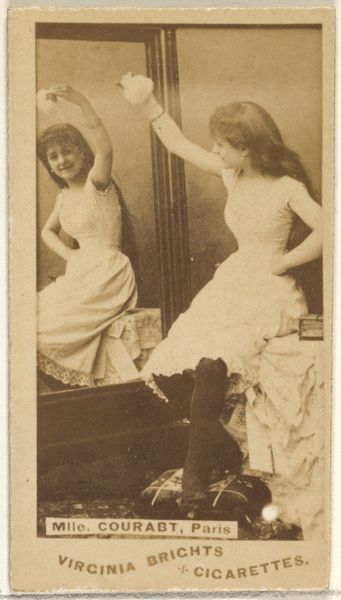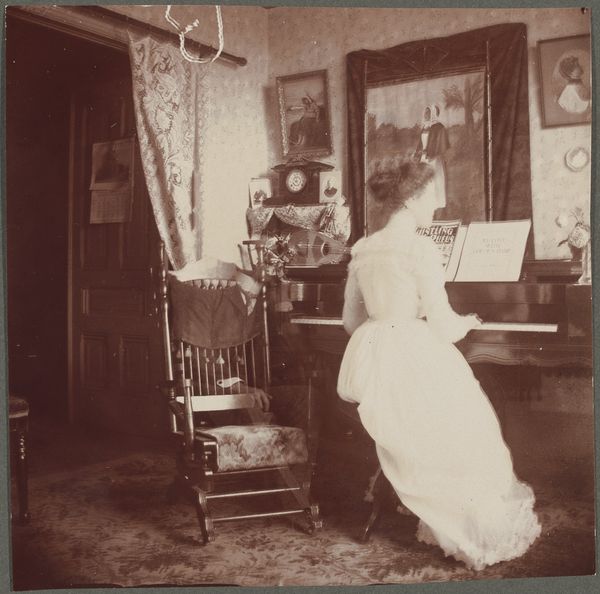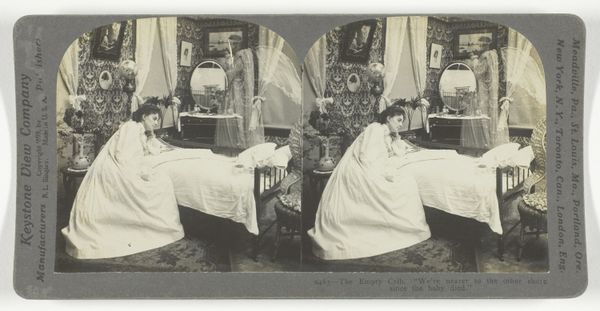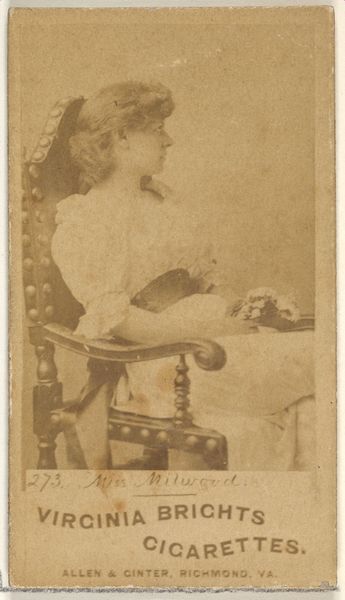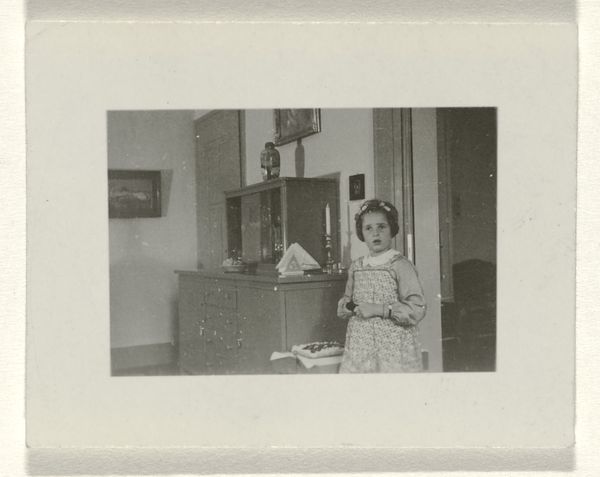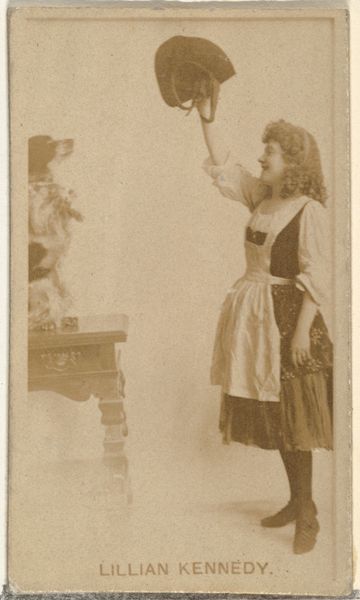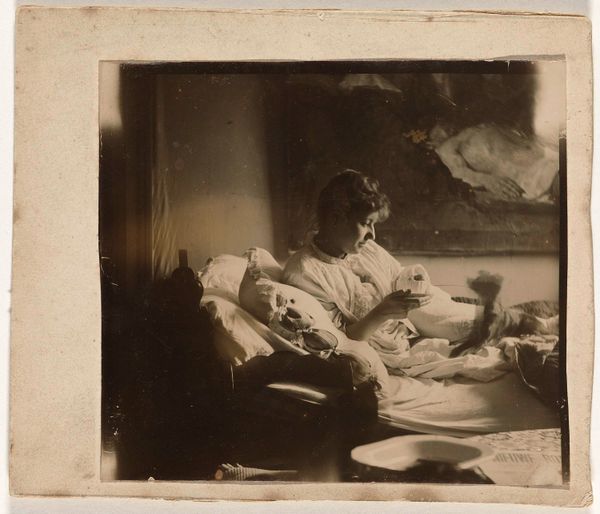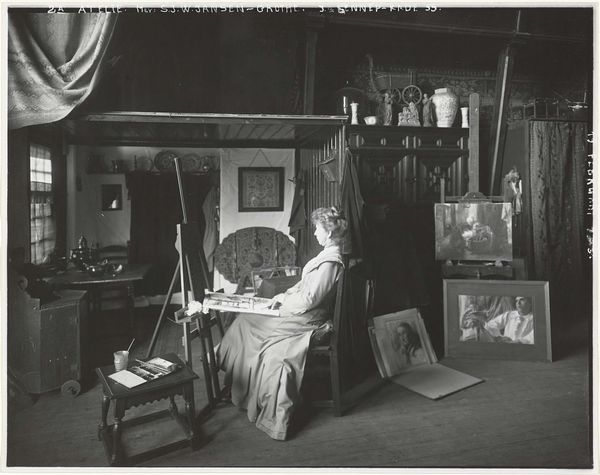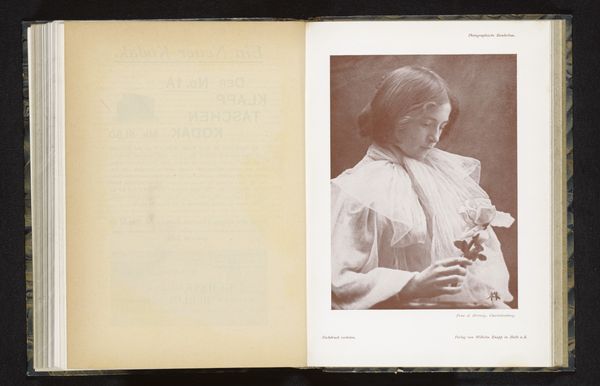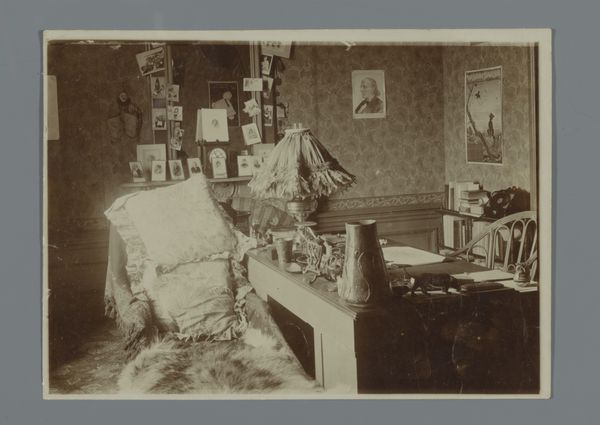
Hansje, the Photographer’s Daughter, in Bed and at the Wash Basin c. 1900
0:00
0:00
photography, gelatin-silver-print
#
portrait
#
muted colour palette
#
pictorialism
#
white palette
#
photography
#
framed image
#
gelatin-silver-print
#
muted colour
#
genre-painting
#
realism
Dimensions: height 90 mm, width 120 mm
Copyright: Rijks Museum: Open Domain
Curator: Here we have a captivating gelatin-silver print from around 1900, titled "Hansje, the Photographer’s Daughter, in Bed and at the Wash Basin," created by Willem de Jong. It presents an intimate scene of a young girl at her morning ablutions. Editor: It's quite evocative, isn't it? There's something haunting about the subdued tones and the way the light catches the girl's face. It feels staged, almost like a genre painting rendered through photography. Curator: Absolutely. The work reflects the influence of pictorialism. Consider how De Jong uses soft focus and tonal manipulation to create an aesthetic effect, moving photography beyond mere documentation toward a more artistic form of expression. He was likely inspired by painters and illustrators from that era, which accounts for the 'posed' sensibility you identified. Editor: That tension between documentation and artistry is interesting. The composition is striking - a child's innocence contrasted with the opulence of the vanity. Look at all those toiletry accoutrements behind her: decorative bowls and slender bottles reflecting light, candles flickering nearby... How much did class and economics factor into this picture's circulation and popularity at the time? Curator: Class and the construction of domesticity were indeed central to the consumption of images like this. Middle-class families in particular wanted images that would signify gentility and affluence, projecting their societal roles in response to socio-economic shifts happening around them at the turn of the century. The photo becomes a record of aspiration and conformity. Even the muted palette echoes aesthetic choices intended to reinforce social values of taste and refinement. Editor: That speaks volumes about how art intersects with larger societal forces. Understanding that power dynamic lets us see past the initial tenderness of the photograph, recognizing its role in perpetuating systems of value and privilege. I find my appreciation of this image, and images like it, often hinges on that balance. Curator: Precisely, and remembering this historical context provides valuable opportunities for understanding art's role as an artifact, not simply something that exists within the narrow confines of gallery walls. It compels us to broaden art historical narratives by drawing from theory, philosophy and a wide variety of disciplines. Editor: Seeing how those factors are inextricable encourages more people to join that critical engagement with artworks as well as with the history and function of the arts sector itself. Curator: A potent example indeed of the intersection between public life and photography during that era, offering a space for considering representation beyond aesthetics alone.
Comments
rijksmuseum about 2 years ago
⋮
The most important achievement of late 19th-century amateur photography was the possibility it afforded of recording one’s personal life, wherein children and family took centre stage. Here the Leiden physician Willem de Jong photographed his young daughter Hansje. The doctor was a doting father to his only child, and always had his camera at the ready at home and on holidays.
Join the conversation
Join millions of artists and users on Artera today and experience the ultimate creative platform.
